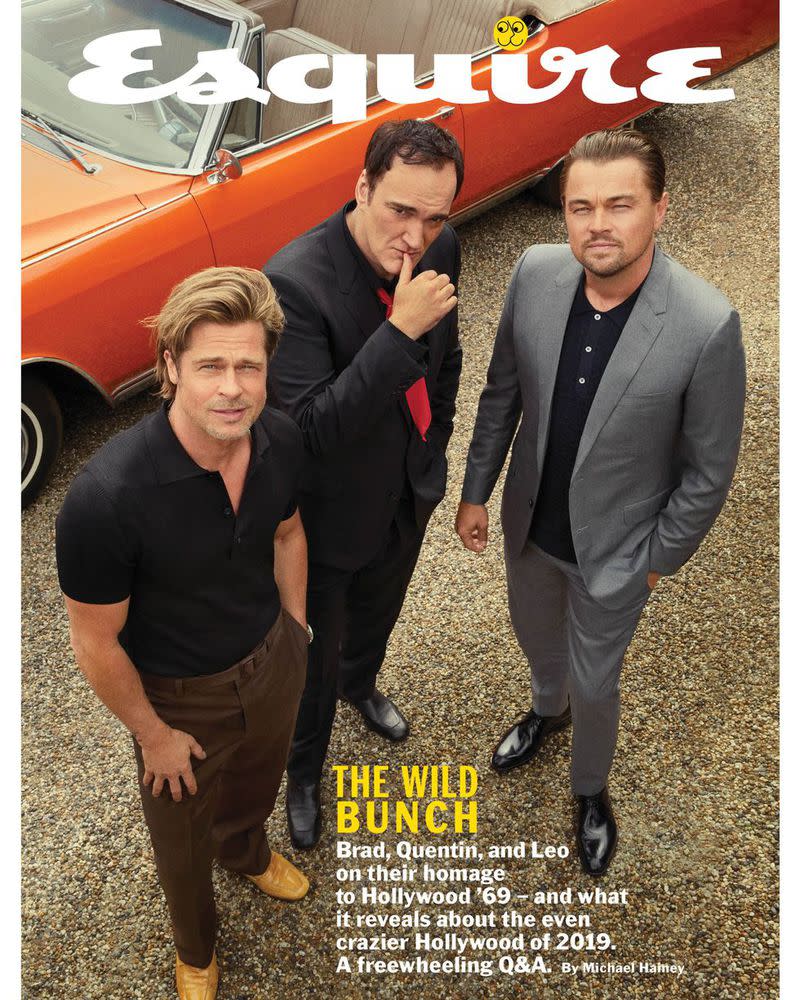Esquire Gets New Editor in Chief

Hearst Magazines is taking a digital swerve with its choice for the new editor in chief of Esquire.
Michael Sebastian, currently digital director for the magazine, is its new editor, making for a major leap on the masthead. Sebastian has been at Esquire for only about two years, but joined Hearst in 2015 as senior editor and then director of its digital news division. Before that, he was a reporter, with a stint covering media for AdAge and before that several years covering p.r. industry news for Lawrence Ragan Communications.
Related stories
Data Confirms French Girl Chic and Other Geographical Buying Trends
Bustle Group Sees Its Future in The Zoe Report
Stitch Fix's Mike Smith on Revenue Growth, the Amazon Threat, China
As first reported by WWD, Nick Sullivan, currently Esquire’s fashion director since 2004, is getting a promotion. He will now be the magazine’s creative director, a new role. Sources have speculated that Sullivan’s role is essentially co-equal to that of Sebastian’s, but will focus more on fashion and the magazine. Both men are taking up their new roles immediately.
As for Sebastain, his is quite a different résumé from that of his predecessor, Jay Fielden, whose abrupt exit from Esquire last month was also first reported by WWD. Fielden spent his entire career as a magazine editor, first at Condé Nast then Hearst, but new leadership at the latter seems to have no qualms with giving younger, more digitally willing and savvy editors top spots, regardless of age or magazine experience. As one source put it, Esquire is headed for “a full Cosmo,” referring to Cosmopolitan magazine going under the leadership of the relatively young Jessica Pels, who was also digital director of the magazine’s site before getting the job. Pels has made no secret of her willingness to go to Instagram for inspiration for the magazine’s design, layouts and coverage, and also her reliance on social media and trending topics to boost online traffic. And it’s working. For the first quarter, mobile traffic to the site was up 24.7 percent year over year and video was up 500 percent, while combined print and digital readership was up 5 percent, according to data from The Association of Magazine Media.
Traffic indeed seems to be the focus of Troy Young, Hearst Magazines president, in installing Sebastian. In a statement on the new editor, Young said site traffic had tripled under Sebastian’s leadership and he had “significantly expanded the brand’s digital footprint.
“His strong leadership, entrepreneurial spirit and innovative approach to creating content will now benefit all of Esquire’s platforms, serving the brand’s audience and advertisers in an even more ambitious way,” Young added.
Kate Lewis, the chief content officer for Hearst Magazines, noted Sebastian’s qualities as an editor, opposed to merely a traffic-getter, calling him “a great storyteller and a champion of features and reporting.”
But she, too, ultimately cited his Internet savvy. “He is also a wise editorial strategist, listening to the audience and acting responsively,” she said in the memo. “He has raised the bar on the web site, around style and culture particularly, and has accelerated growth on the politics beat. I look forward to him bringing this enterprising and polished approach to his new role and combining these two strong teams, print and digital.”
That combination has been coming for some time, with chatter of Esquire getting a digital makeover starting not long after Young became president last year. Now there is talk internally of more editorial casualties with that combination coming into effect. Already, it’s significantly shifted the top of the masthead, including the abrupt exit of Michael Hainey, who was executive director of editorial, the number-two position under Fielden, which is not expected to be filled. Other changes will surely come as Sebastian goes about hiring and promoting his own team.
And changes to content and overall look will surely come, too, not least with the success of Cosmopolitan, and while Esquire’s rival in the men’s space, GQ, is skewing younger and more pop-oriented, with covers of influencers and young musicians, respectively. Trending news and e-commerce pushes online are also big initiates at both outlets.
“Leading this iconic brand in digital for the past two years, reimagining how an 86-year-old magazine exists and thrives in the 21st century, has been an incredibly rewarding experience,” Sebastian said in the memo. “Every day on the Internet is a referendum on a brand’s relevance, and I am excited to bring that kind of thinking to all platforms for Esquire.”
For More, See:
Harper’s Bazaar Gets Into Men’s With Jonas Brothers Digital Cover
Bustle Group Sees Its Future in The Zoe Report
Pride Month Starts With Out Magazine on Shaky Ground
Sign up for WWD's Newsletter. For the latest news, follow us on Twitter, Facebook, and Instagram.

